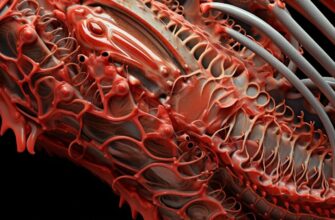Have you ever wondered if lobsters have blood? It’s a common question among seafood enthusiasts and curious minds alike. The answer is yes, but it’s not quite like the blood found in other animals. In this article, we will explore the circulatory system and anatomy of lobsters, and take a closer look at the intriguing world of lobster hemolymph.
Lobsters are fascinating creatures with a unique physiology. Their circulatory system is quite different from that of other animals, and their blood, known as hemolymph, plays a vital role in their survival. Despite their tough exterior, lobster anatomy is surprisingly intricate, and understanding their circulatory system is key to unlocking the mysteries of their biology.
- Understanding Lobster Anatomy
- Lobster Anatomy: A Closer Look
- The Role of Hemolymph in Lobsters
- What Color is Lobster Blood?
- Unveiling the Lobster’s Circulatory System
- Comparing Lobster Blood to Human Blood
- Hemocyanin vs. Hemoglobin
- The Function of Lobster Blood
- FAQ: Do Lobsters Have Blood?
- What color is lobster blood?
- How does the lobster’s circulatory system work?
- Is lobster blood similar to human blood?
- What is the function of lobster blood?
- Are there any similarities between lobster blood and human blood?
- Do lobsters have a heart?
Understanding Lobster Anatomy
Lobsters have a complex anatomy that is essential to their survival. Their anatomy includes the circulatory system, which is responsible for transporting nutrients and oxygen throughout the body.
The circulatory system of lobsters is similar to that of other arthropods. It consists of an open system where a colorless fluid called hemolymph flows through the body cavity of the lobster. The hemolymph is pumped by the heart into arteries, where it then flows into the various organs of the body. From there, it returns to the heart through the veins.
| Did You Know? |
|---|
| Lobsters have a compound eye that is made up of thousands of small lenses, which allows them to see clearly in all directions. |
The heart of the lobster is located in the upper part of the body and is similar in structure to that of other arthropods. However, unlike the hearts of other animals, the lobster’s heart is located above the digestive system.
Lobster Anatomy: A Closer Look
In addition to the circulatory system, lobsters have other unique anatomical features. For example, they have ten legs, with the first pair being larger and used for catching prey. They also have two large claws that are used for defense and for crushing their food.
The exoskeleton of the lobster is another interesting aspect of their anatomy. The exoskeleton is a hard, protective outer layer that covers the lobster’s body. It is composed of chitin, which is a tough, fibrous protein. The exoskeleton is shed periodically as the lobster grows, and a new, larger exoskeleton is formed.
“The anatomy of lobsters is fascinating and complex, allowing them to thrive in a variety of environments.”
The anatomy of lobsters is fascinating and complex, allowing them to thrive in a variety of environments. Understanding their anatomy, particularly their circulatory system, is essential to learning more about these intriguing creatures.
The Role of Hemolymph in Lobsters
While lobsters do not have blood in the traditional sense, they do have a circulatory fluid called hemolymph. Unlike blood, which is composed of erythrocytes (red blood cells) and plasma, hemolymph is a mixture of blood and interstitial fluid that acts as both a transport medium and a defense mechanism in lobsters.
Hemolymph is pumped throughout the lobster’s body by the heart, which is located just below the carapace. It flows through a series of arteries and veins that are connected by a network of open sinuses, which allow the hemolymph to come into direct contact with the tissues and organs it serves.
“Hemolymph serves a number of important functions in lobsters, ranging from nutrient transport to immune defense.”
One of the primary functions of hemolymph in lobsters is nutrient transport. It delivers essential nutrients, such as oxygen and glucose, to the tissues and organs that need them most. In addition, it helps to remove waste products, such as carbon dioxide and nitrogenous waste, from the lobster’s body.
Hemolymph also plays an important role in the lobster’s immune defense system. It contains a variety of immune cells, such as hemocytes, that help to identify and destroy invading pathogens, such as bacteria and viruses. Additionally, it contains proteins that help to clot the hemolymph in the event of an injury, sealing off wounds and preventing further blood loss.
Overall, the role of hemolymph in lobsters is multifaceted and essential to their survival. Without this circulatory fluid, lobsters would not be able to transport vital nutrients or defend against harmful pathogens in their environment.
What Color is Lobster Blood?
Have you ever wondered what color lobster blood is? Unlike human blood, which is typically red, the blood of lobsters is not red. In fact, it can range in color from clear to a faint blue or green.
This difference in color is due to the fact that lobster blood uses a different protein than human blood to transport oxygen. Lobsters have a protein called hemocyanin, which contains copper and gives the blood a blue-green color.
So, the next time you crack open a lobster shell, don’t be surprised if you don’t see any red liquid. Instead, you may notice a clear or slightly colored fluid that serves the same purpose of circulating oxygen throughout the lobster’s body.
Unveiling the Lobster’s Circulatory System
The circulatory system in lobsters is quite different from that of humans. In lobsters, their blood, known as hemolymph, is not contained within closed blood vessels but instead baths their organs directly. The hemolymph is pumped by the heart through a series of arteries and channels and eventually returns to the heart via small pores called ostia.
The lobster’s heart, located behind its eyes, is a muscular tube that pumps the hemolymph into the arteries. The hemolymph then diffuses into the lobster’s tissues, providing them with nutrients and oxygen. Once the hemolymph has delivered oxygen and nutrients, it flows back to the heart through the ostia.
The efficiency of the lobster’s circulatory system is due to the fact that hemolymph is not restricted by closed vessels. Instead, the hemolymph can reach every tissue in the body, rapidly delivering vital nutrients and removing waste products. However, the circulation of hemolymph is much slower than within closed systems found in mammals, which can limit the speed of metabolism in lobsters.
Comparing Lobster Blood to Human Blood
While lobsters have blood, there are notable differences compared to human blood. For instance, the composition of lobster blood is different from mammalian blood. There are no red blood cells in lobster blood. Instead, the blood of lobsters is called hemolymph, which is a combination of plasma and blood cells.
Hemolymph is primarily responsible for transporting oxygen, nutrients, and waste products throughout the lobster’s body. It also plays a significant role in the lobster’s immune system, acting as a defense mechanism against foreign organisms.
Hemocyanin vs. Hemoglobin
The most significant difference between lobster blood and human blood is the oxygen-carrying molecule. In human blood, oxygen is carried by hemoglobin, while in lobster blood, it is carried by a molecule called hemocyanin. Hemocyanin is a blue-colored protein that contains copper and allows lobsters to survive in low-oxygen environments.
Hemocyanin is responsible for the blue-green color of lobster blood, which is distinctly different from the red color of human blood due to the presence of hemoglobin. However, it’s important to note that the color of lobster blood may vary depending on the species of lobster.
In summary, while lobster blood and human blood both serve the same purpose of transporting oxygen and nutrients, their composition and mechanisms are quite different due to the unique environment and physiology of lobsters.
The Function of Lobster Blood
Lobster blood, also known as hemolymph, plays an essential role in the survival of these fascinating creatures. While it may differ from traditional blood found in other animals, it is no less important. Let’s explore some of the key functions of lobster blood:
- Oxygen Transport: Like human blood, lobster blood carries oxygen to the various organs and tissues throughout the body. However, instead of using red blood cells, lobsters utilize a copper-based molecule called hemocyanin to transport oxygen. This gives their blood a bluish color rather than the familiar red color of human blood.
- Immune Function: Hemolymph also plays a critical role in the lobster’s immune system. It contains specialized cells called hemocytes that identify and eliminate foreign invaders such as bacteria and viruses.
- Wound Healing: Lobster blood contains various compounds, such as lectins and clotting factors, which help to aid in the healing of wounds. In fact, some researchers have even investigated the potential use of lobster blood in wound care for humans.
In summary, lobster blood is a multi-functional substance that allows these creatures to survive and thrive in their unique environments. Its ability to transport oxygen, fight off pathogens, and assist in wound healing make it a vital component of the lobster’s biology.
FAQ: Do Lobsters Have Blood?
Yes, lobsters have blood, but it is different from the blood found in humans and many other animals. Lobster blood is called hemolymph, and it serves a similar function to blood in that it transports nutrients and oxygen throughout the lobster’s body.
What color is lobster blood?
Lobster blood is typically colorless when it is inside the lobster’s body. However, when it comes into contact with oxygen outside the body, it turns blue, which is why some people refer to it as “blue blood.”
How does the lobster’s circulatory system work?
The lobster’s circulatory system is open, which means that hemolymph is pumped directly into the body cavity rather than through a network of veins and arteries. The hemolymph then bathes the lobster’s internal organs, providing them with the necessary nutrients and oxygen.
Is lobster blood similar to human blood?
No, lobster blood is not similar to human blood in terms of composition. While human blood contains red blood cells and hemoglobin, lobster blood lacks these components and relies on hemocyanin to carry oxygen.
What is the function of lobster blood?
Lobster blood serves several functions in the lobster’s body. In addition to transporting nutrients and oxygen, it also plays a role in the lobster’s immune system by carrying white blood cells that help to fight off infections.
Are there any similarities between lobster blood and human blood?
Despite their differences, lobster blood and human blood do share some similarities. Both contain proteins and other components that are important for maintaining overall health and functioning.
Do lobsters have a heart?
Technically, lobsters do have a heart, but it is a simple organ that pumps hemolymph through the body rather than a complex system of veins and arteries.
We hope that this article has answered your questions about lobster blood and their fascinating circulatory system. Keep in mind that while lobsters may seem like strange creatures, they play an important role in our ecosystem and have a unique physiology that is worth exploring.









